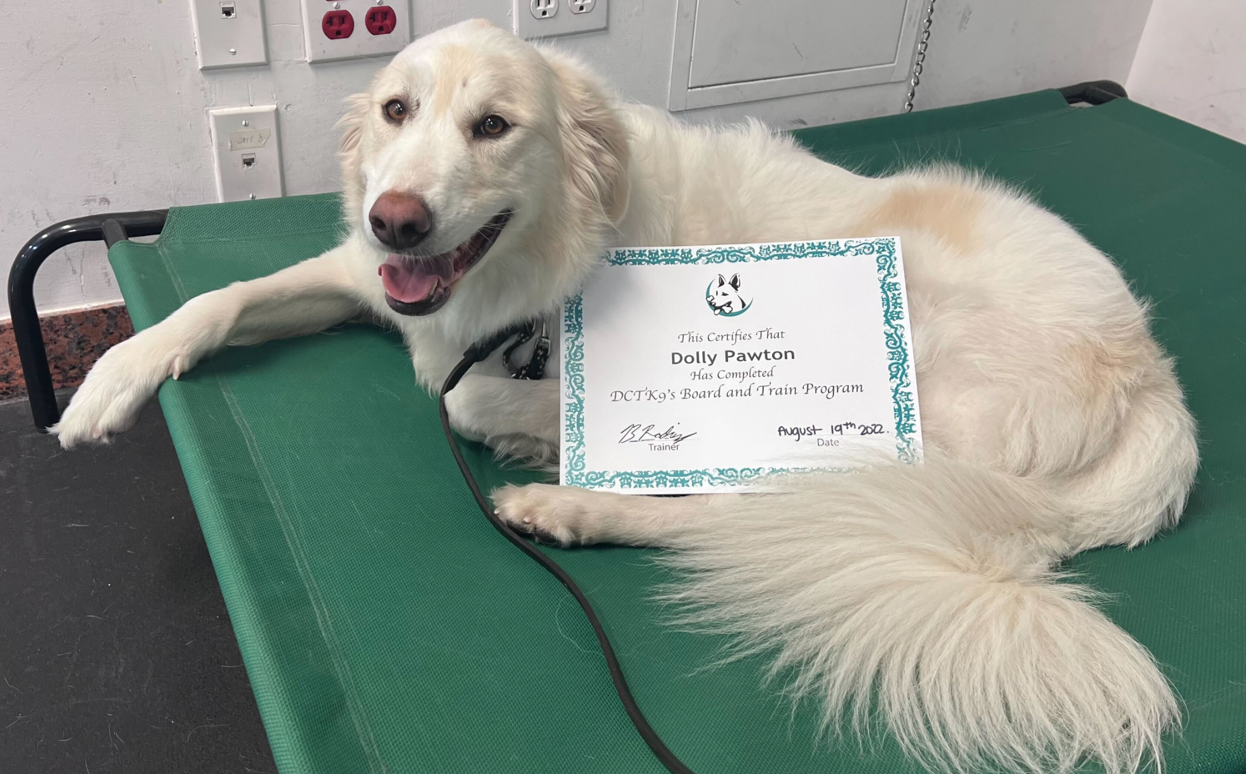Intro to Relaxation Training
The journeys that our foster dogs take before we welcome them into our homes can be long, daunting, and stressful. Dogs thrive with structure and routine, so even the most happy-go-lucky pups can feel a sense of unease when entering a new environment. Sometimes these feelings of insecurity can lead to undesirable behaviors like leash frustration and reactivity, or they may present as fearfulness or hyperactivity. Many dogs just need time and space to decompress! There are ways to help your foster dog feel more comfortable and set them up for success. Relaxation training is one great but often overlooked way to help your dog learn to stay calm and feel more confident in new situations.
It may seem odd that relaxing is something you would need to “teach,” but anyone who has cared for a toddler knows that playing and exploring are preferred over settling in for a nap. And what happens when a toddler misses their nap time? They can become overtired, irritable, or emotional. The same is true for dogs who haven’t learned how to slow down.
Currently adoptable, Latte, relaxing after a play session with his foster brother.
Many fosters believe that the best way to tire their pup out is to give them excessive amounts of playtime and exercise, which can have the opposite of its intended effect. While exercise is necessary for a dog’s overall physical health and well-being, it is important to make sure your dog is not getting too much of it. The amount of exercise each dog needs depends on many different factors including age, size, current fitness level, health, and genetics. In general, 30-60 minutes of exercise per day is enough for most adult dogs and this is a good starting point for when you’re first getting to know your foster.
Mental enrichment, like puzzle toys, Kongs, lick mats, and snuffle mats are equally important to physical exercise in order to keep your pup healthy and happy. There are many free and easy ways to make sure your foster is mentally stimulated. Calm Canine Academy also recommends giving your pup one thing to lick, one thing to chew, one thing to shred, and one opportunity to sniff things out daily.
A good time to start relaxation training with your foster pup is after they have gotten some energy out with an appropriate amount of physical exercise and mental enrichment. Giving your dog short periods of time in their crate after completing an activity can help encourage a state of rest and also helps with crate training!
Currently adoptable, Penny Lane, is a pro at taking breaks to calm down in her crate.
Another easy way to encourage relaxation is to reward desired behaviors whenever you see them happen organically. Decide on one marker word that you want to use like “calm” or “settle.” Then, when your dog is quietly sitting or laying down, say the marker word and praise them in a soft and quiet tone and give them a treat. With enough reinforcement, your pup will start to associate calm behavior with the marker word. Then you can gradually increase the amount of stimuli happening around the dog with small movements and noises, only rewarding them when they stay calm. This will help to build up their ability to relax on cue, even with distractions.
It is also important to ignore undesirable behaviors as they occur. If your foster jumps up on you because they are excited or barks at you because they want something, giving them any kind of attention can reinforce these behaviors. Instead, completely ignore them and even turn your back to them until they stop. Then, once they have settled, you can give them what they want. You can also easily reinforce this at every meal. If you only place their food down for them to eat once they’ve sat calmly, your pup will quickly learn that stillness has a much better payout than acting out does.
MPR alum, Mushu, patiently waiting for his food.
It is also helpful to make sure your dog has a good foundation of the commands “sit” and “down.” Although dogs may be in work mode when practicing commands, slowly increasing the amount of time that they stay in these positions can lead them to a state of calm. For example, after asking your dog to stay in a down position, watch for signs that they may have reached a more relaxed state. If they show signs that they are relaxing, such as resting their head down, or rolling onto their side, you can then say their relaxation marker word, softly praise them, and give them a treat.
MPR alum, Dolly Pawton, showing off her relaxation skills while at a board and train program.
If you are looking for a more structured way of teaching your foster dog to relax, you can follow Dr. Karen Overall’s Protocol for Relaxation. Dr. Overall is a veterinary behaviorist who created this 15 day program in 1997. It is still used to this day because it is simple, effective, and requires very few tools to get started—all you really need are high value treats and a mat. This protocol is similar to some of the techniques already listed above, but it provides you with step by step instructions for the amount of time to ask your dog to hold their position, as well as when and how to add in distractions.
Here are some important tips to remember when practicing relaxation training with your foster pup:
Stay calm while working on relaxation techniques. We want to model the behavior that we are looking for from our foster pups. If you get excited, chances are they will too!
Don’t do too much too soon. Most dogs do best with short and consistent training sessions. It’s important to go at your dog’s pace in order to make training easy and fun.
Practice makes perfect. It may take some time to see results, but it will only take longer if this becomes a frustrating experience. Try to stay positive and focus on the progress you’ve made, even if it seems small.
Remember, you are not in this alone. Always reach out to your foster buddy for advice or to schedule time with staff during foster office hours for more help.
Jenna is the foster program coordinator at Muddy Paws Rescue and a mom to four fur kids. You can meet Jenna at upcoming transport arrivals and adoption events, and get in touch with her at fosters@muddypawsrescue.org.








